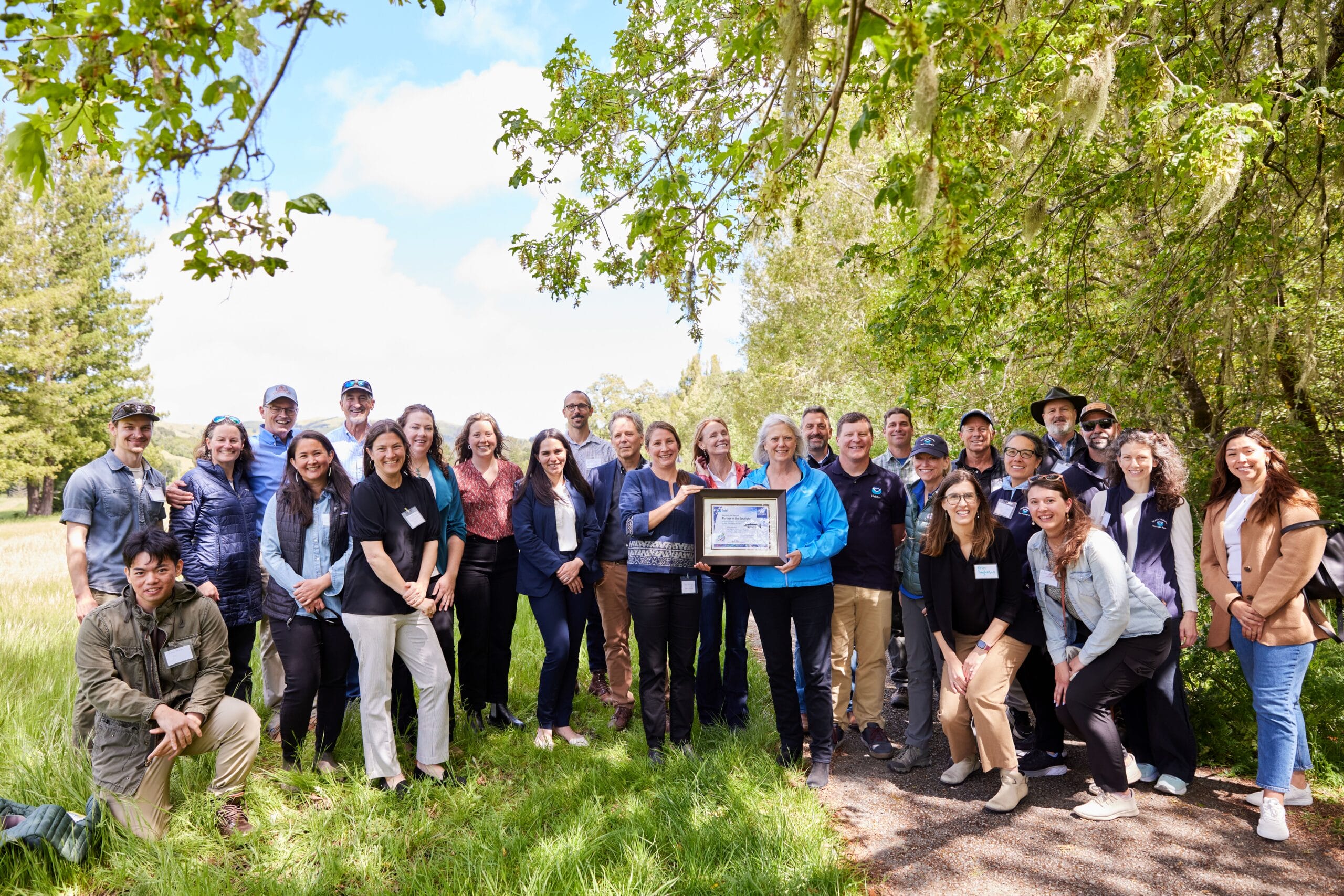TU’s sticktuitiveness at work on a Priority Water in California
A few years ago, the president of the Trout Unlimited Golden Gate Chapter took me to a creek called Devil’s Gulch—a tributary of Lagunitas Creek, an important salmon and steelhead river in California that is one of TU’s Priority Waters. Mike Cronin proudly showed off the interlacing logs and other habitat improvement work he and other chapter leaders had completed the week before.
Then he pointed maybe 30 yards downstream. “See that structure that creates the pool down there? My Dad and I built that together 30 years ago when I was 14.”
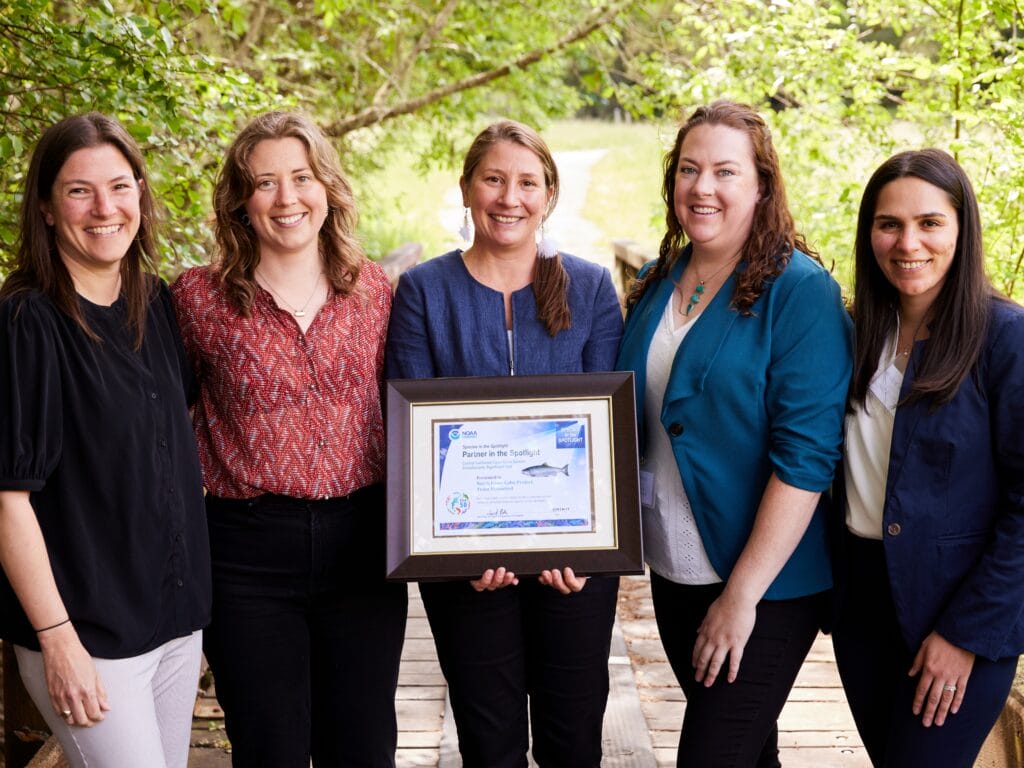
Mike’s father is Leo Cronin, a TU legend in California. One would guess that, like me forcing my sons to serve Sunday Mass, his Dad left Mike little choice but to “serve” TU. That is until you saw the gleam in Mike’s eyes as he talked about the chapter, and his personal, 30-year commitment to Devil’s Gulch, Lagunitas Creek and its coho and steelhead.
I was reminded, last week, of the commitment of the Cronin family as we stood on the banks of San Geronimo Creek, another important tributary to Lagunitas Creek.
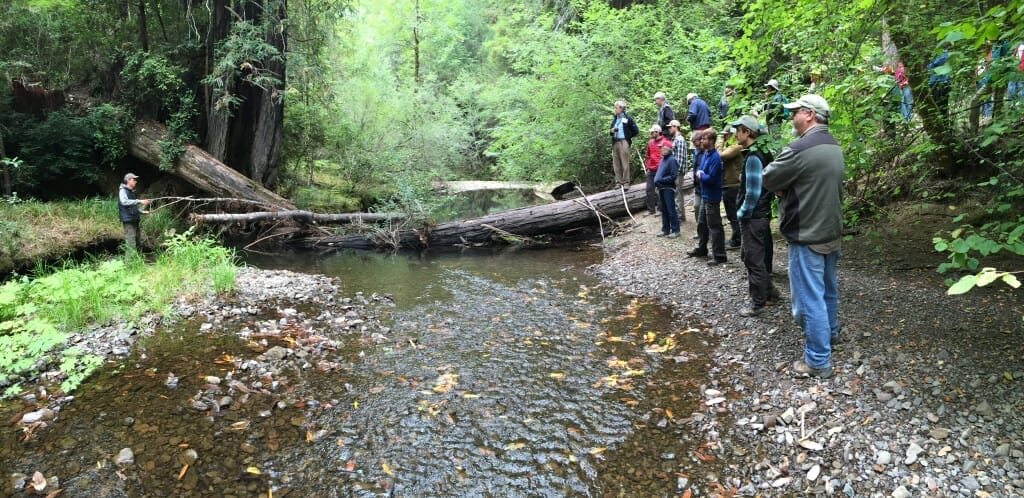
Well-deserved award
Dignitaries from NOAA Fisheries and U.S. Rep. Jared Huffman (D-CA) awarded Trout Unlimited’s North Coast Coho Project a Partner in the Spotlight award. I stood proudly with TU staff from California as Anna Halligan, Elise Ferrarese, Daisy Schadlich, Katie Robbins, and Nicole Herrera were honored for the NCCP’s inspiring work.
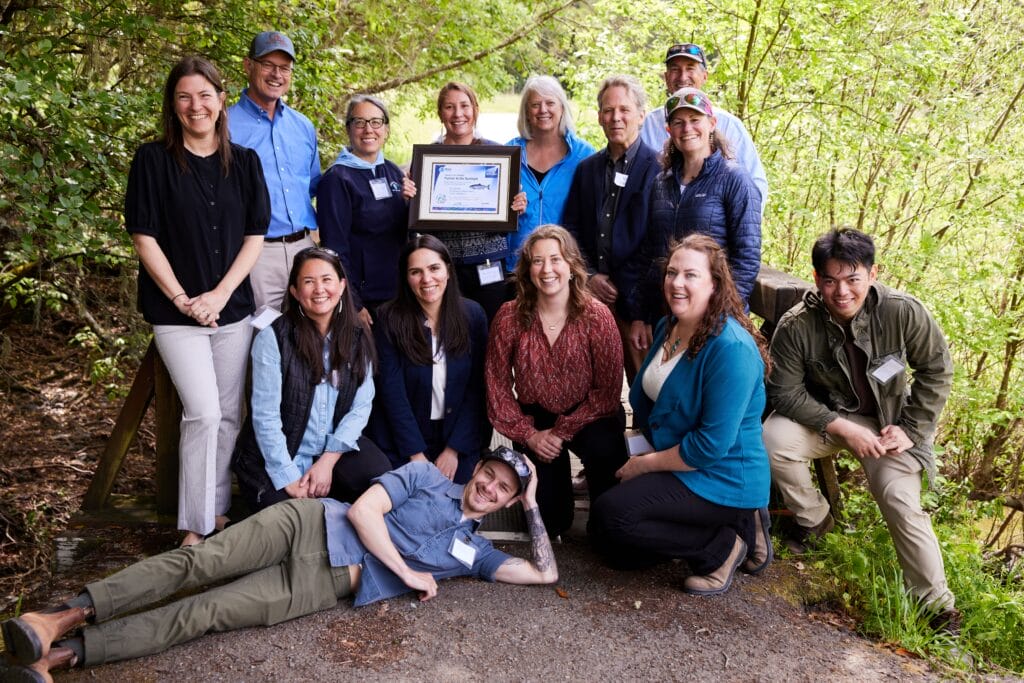
In his remarks, Matt Clifford, California’s state director, talked about how, over his ten-plus years with TU, the NCCP has grown to become the largest non-governmental salmon and steelhead habitat restoration program in California and is playing a major role in checking off priority actions under the recovery plan for Central Coastal Coho. Anna talked about the interlocking connections and partnerships that allow seemingly small projects to add up to something much larger and important. Katie spoke of TU’s grand vision to recover the floodplain of San Geronimo Creek from a former golf course over the next several years.
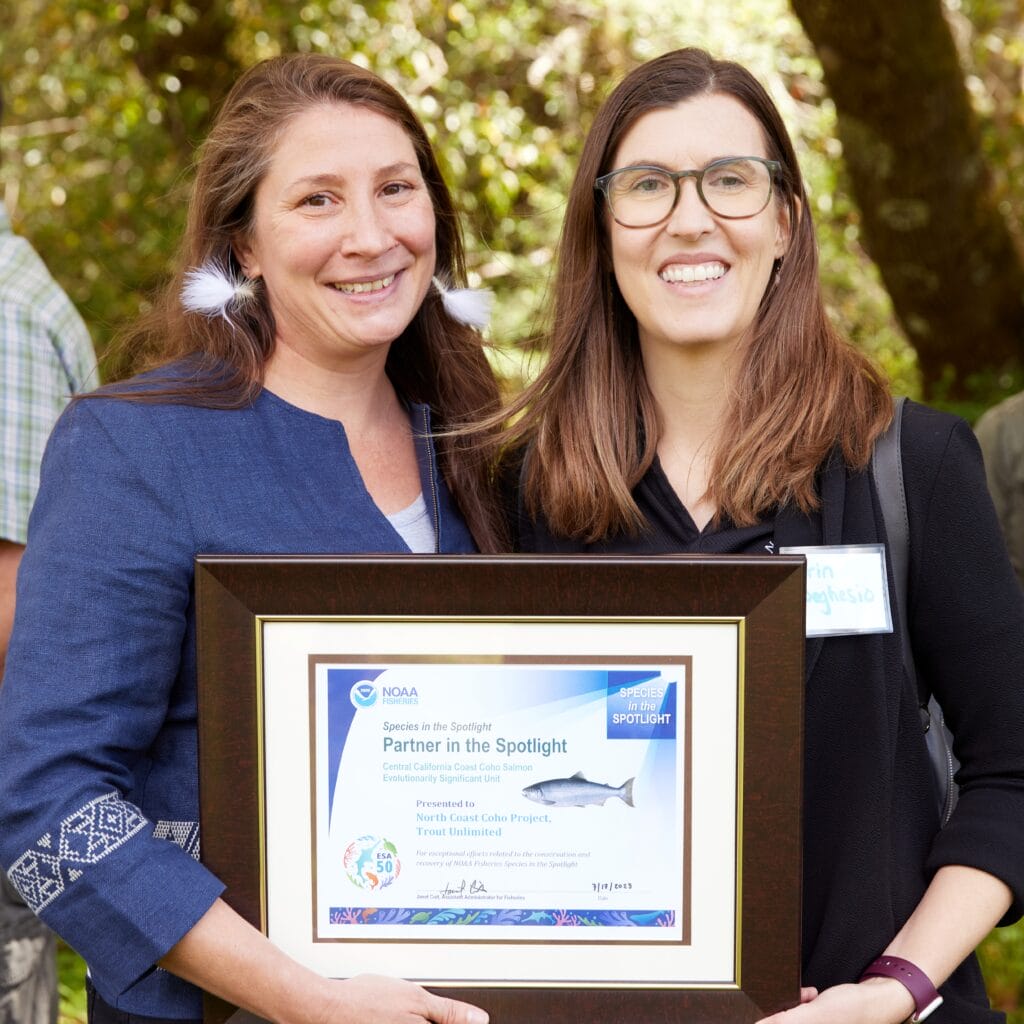
One of our staff biologists, Troy Cameron, who chills out by playing heavy metal guitar and whose brother is a professional race car driver, described how he had snorkeled the stream and found more than 1,500 coho and steelhead in a relatively short stretch of stream.
The entire afternoon was a wonderful reflection of the values that make TU strong.
Not without partners
Everything we do at TU is done in partnership with others. The North Coast Coho Project started in 1998 as a partnership among TU and a few private timber companies that were operating on old Louisiana Pacific timberlands. These forests were hammered by clearcuts and were sending tons of sediment into fabled North Coast rivers such as Navarro and the Garcia.
TU’s Steve Trafton created the NCCP during a time when conservation initiatives and timber interests were seemingly opposed, but Steve was able reveal the shared goals that benefit water, native fish, and rural resource-based economies. This unique relationship building became the foundation of the NCCP.
Over time, under the leadership of staff like Lisa Bolton and guidance from the NOAA Restoration Center, this partnership network expanded to include Mendocino, Sonoma, and Marin counties; other timber companies; conservation organizations, and private landowners. The program became a model of how collaborative efforts can yield demonstrable results. In 2016, Anna Halligan took leadership of the program and assembled a talented and passionate team of professionals who are committed to nurturing the relationships that make salmon and steelhead recovery possible.
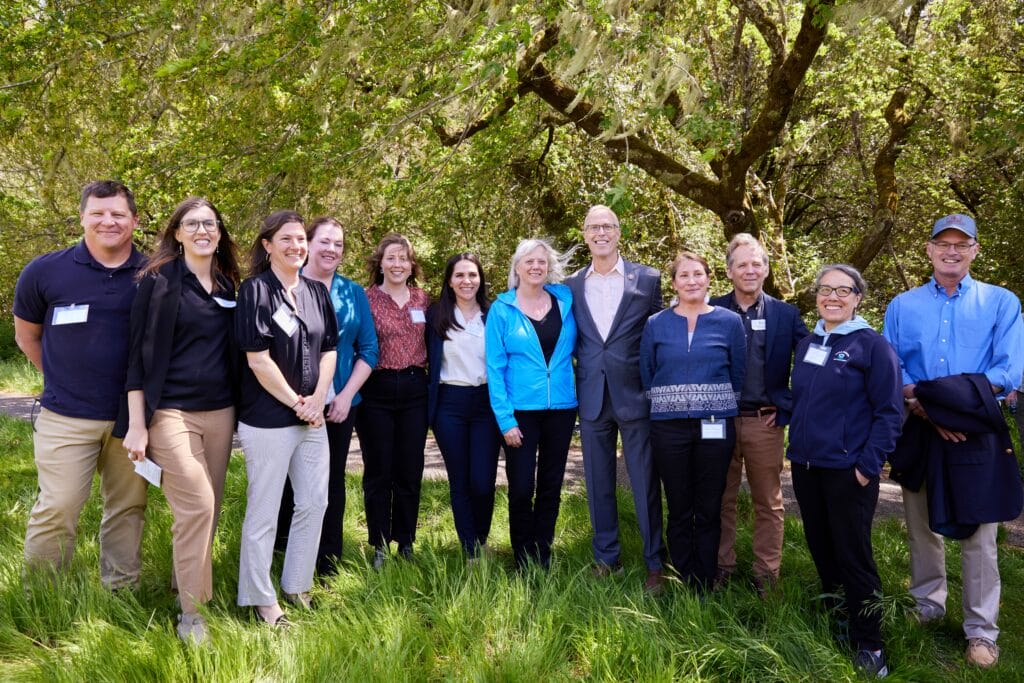
The NCCP’s impact is impressive. Over the past 25 years, we treated 575 miles of road and prevented the equivalent of 71,000 dump truck loads of sediment from entering the water. We have restored over 140 miles of river and stream on the North Coast.
The North Coast Coho Project is a wonderful demonstration of the sticktoitiveness of TU. I remember the work of the late great California volunteer, Stan Griffin, who organized the removal of Roy’s Dam on San Geronimo Creek when he was alive. Stan died in 2011 at 91. When I looked at the North Coast Coho team assembled by the creek last week, I see a new generation of leaders dedicated to watershed restoration. When TU commits to solving a problem, we commit for the long term.
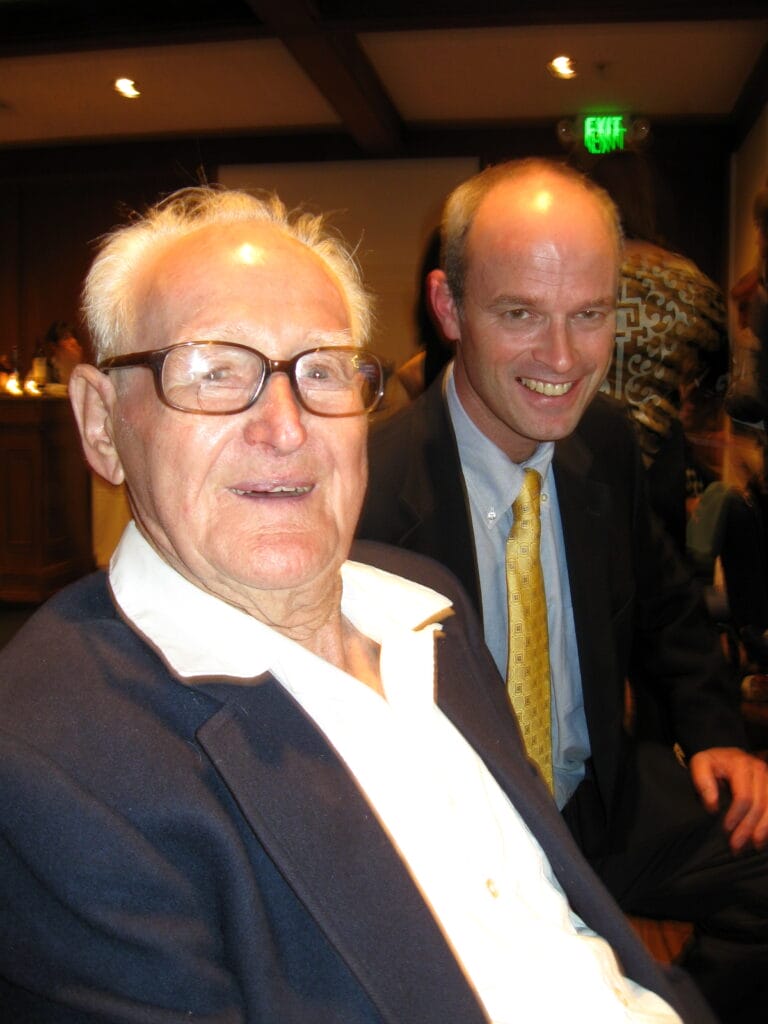
In my opinion, the most important of our core values as an organization is that we are optimists and believe in a better future. So much about conservation is overseeing loss. The special sauce of TU is that we see opportunity where others see degradation.
When the North Coast coho was first listed under the Endangered Species Act, it was one of the most imperiled salmonids in the United States. The work of Trout Unlimited and the North Coast Coho Project provide hope for the future—not just for the coho, but for all of us.



